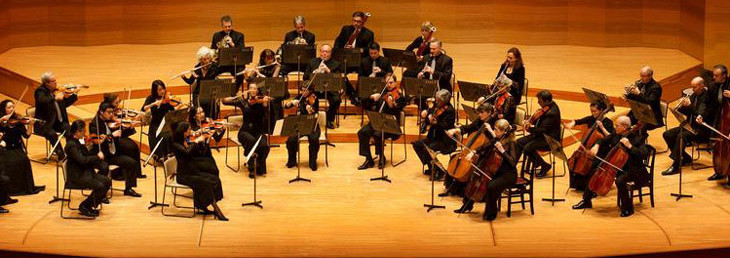The kind of leadership that is music for our ears

When cellist Julian Fifer graduated from her music studies in 1972, the prospect of becoming another member of a symphony orchestra seemed depressing in the extreme to her. Active in several movements of those counter-culture days and having tasted the freedom of playing chamber music, she was well aware that the role of the music director remained a bastion of totalitarianism and, as organizations go, few were more autocratic in structure than the traditional symphony orchestra.
So she decided to create Orpheus Orchestra as a co-operative 15-members ensemble. That was small enough to perform without a conductor. But it was precisely this innovative approach what attracted other talented like-minded musicians, as well as more concerts and gigs. Suddenly it was obvious that some hierarchy was necessary to reduce complexity and speed decision-making. But this leadership was not to be found by having a conductor, so a new collaboration methodology started to take place.
Today, this methodology is been dubbed as the “Orpheus process”, a process based in some elements that can inspire us when trying to stablish a new more collaborative way to work together, the kind of methodology needed for a successful collaborative environment not just to work with some other companies but also internally within our own organization between different units, departments or roles.
The orchestra analogy is not trivial. It turns out orchestral musicians usually rank in the lowest levels of job satisfaction according to different studies on attitudes in the workforce (in one of these studies they even ranked below prison guards). Even under the most benign music director, the creative life of symphony orchestra players remains considerably constrained.
So we have this contradictory context between the need for passion/creativity and systems based on a hierarchical organizations designed to suppress both for the better good of “efficiency”. A contradiction that can also be applied to the most important kind of employees organizations need today and will crave for even more in the future, the kind of employees less possible to be replaced by a robot or a software, the ones adding their passion and creativity as key competitive elements for certain business activities, the ones therefore who will most likely experience a disconnect between their passion for their chosen field and their creative impulses, and not having those things engaged within the fixed, subservient roles of their workplace.
Innovation and collaboration are some of such key business activities. We all already know great ideas don’t depend on hierarchy or seniority, they don’t depend on a pyramidal organization but on a network of enough passionate and creative participants engaged in solving a challenge and, more importantly, willing to put an important part of their egos aside during the process.
In summary, the process of an orchestra without a conductor producing wonderful music offers a metaphor for us to gain some insights as to how we can improve our process and methodologies for collaboration and co-innovation…
Size matters. Four or five people can easily discuss matters as equals. Some kind of leadership is necessary when bigger groups not just make collaboration more complex, but create a chaos in which it is also more difficult for each member of the group to have a meaningful impact.
Leaderships can be occasional. The Orpheus Orchestra works with occasional leaderships restrained to a particular project. They devised a system of rotating leadership revolving around a “core” of musicians elected for each piece by the musicians themselves, and a concertmaster (chosen for each piece by a committee of orchestra members) that has special responsibilities, as bringing focus and shape to the musical interpretation.
Leaderships are not about “all or nothing”. At the Orpheus Orchestra some teams form and disband from project to project, but others are longer range and involve larger artistic and administrative duties. Contrary to most of orchestras, they do not have a single artistic director but three coordinators (elected by members) who develop different roles usually hold by just one person.
Absolute power is bad even for the leader.There is a benefit in sharing power. To be leader all the time could be terribly stressful (therefore not good for taking the right decisions). By rotating between numerous positions, members of the Orpheus Orchestra can use a wide range of their talents and pursue different interest in addition to the highly specialization of playing their instruments.
Success is the best antidote for deniers. “At the beginning, there were probably only a couple of nuts in the orchestra who would consider that we could ever do a Beethoven symphony without a conductor. After 10 or 12 years, there may have been a few more people who thought we might have been able to tackle it”, explained violinist Ronnie Bauch, one of the first members of the Orpheus Orchestra.
What You Can Learn About Collaboration and Leadership From a Chamber Orchestra
